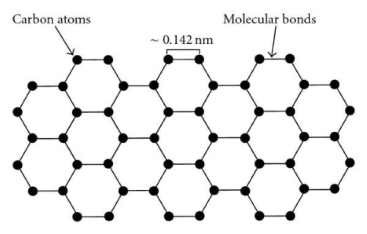How Will Graphene Revolutionize the 21st Century?
In the ever-evolving landscape of science and technology, discoveries that once seemed unimaginable have become cornerstones of modern innovation. Graphene, a material with origins in theoretical discussions as far back as the 1940s, stands at the forefront of such transformative advancements. Initially met with skepticism due to its seemingly impossible two-dimensional structure—just one atom thick—graphene has since shattered the boundaries of what scientists believed feasible. Recent experiments have not only confirmed its existence but unveiled properties that position graphene as the strongest, most efficient conductor of heat and electricity known to man.

Discovery and Properties of Graphene
Graphene's journey from theoretical speculation to scientific marvel began earnestly in 2004 when researchers at the University of Manchester isolated the material for the first time. This breakthrough experiment demonstrated that graphene is not a mere scientific curiosity but a stable, two-dimensional material with a lattice of carbon atoms arranged in a hexagonal pattern. Its discovery earned the team the Nobel Prize in Physics in 2010, acknowledging graphene's potential to redefine the limits of materials science.
The allure of graphene lies in its exceptional properties. It is about 200 times stronger than steel by weight, conducts electricity more efficiently than copper, and surpasses all known materials in thermal conductivity. Moreover, graphene's flexibility and transparency open up a realm of possibilities previously constrained by the limitations of conventional materials.
Graphene in Electronics: The Forefront of Innovation
The electronics industry, in particular, stands to benefit immensely from graphene's unique characteristics. With the ongoing miniaturization of electronic devices and the quest for more energy-efficient solutions, graphene offers a beacon of hope. Its superior electrical conductivity and strength, coupled with its flexibility, make it an ideal candidate for developing thinner, more durable, and energy-efficient electronic components.
Applications of Graphene in Technology
Flexible Touch-screens: Imagine smartphones and tablets that are not only lighter and thinner but also flexible enough to be rolled or folded, drastically enhancing portability and functionality. Graphene's remarkable flexibility and strength, combined with its excellent conductivity, make such innovations conceivable. These futuristic devices could transform how we interact with technology, making digital interfaces more integrated into our daily lives and physical environments.

Conductive Plastics: The fusion of graphene with plastics to create conductive composites heralds a new era of material science, akin to the development of alloys. By imbuing plastics with graphene's electrical conductivity, industries could revolutionize products ranging from lightweight, fuel-efficient aircraft to durable, energy-efficient automobiles and even construction materials that could change the face of urban development.
Electrochemical Advancements: In the realm of energy storage and conversion, graphene's potential is unparalleled. Its use as an electrode material in batteries and supercapacitors promises to significantly enhance their capacity, charge-discharge rates, and longevity. Such advancements could lead to electric vehicles with much longer ranges and faster charging times, renewable energy systems with more efficient storage solutions, and portable electronics that require less frequent charging.
The Future Impacted by Graphene
The applications of graphene extend far beyond what has been imagined thus far, touching on sectors as diverse as healthcare, where it could lead to breakthroughs in drug delivery systems and medical diagnostics, to energy, where it could revolutionize solar panel efficiency and energy storage. The potential for graphene to act as a catalyst for innovation is immense, promising to usher in a wave of advancements that could rival the introduction of plastics or silicon in their transformative impacts on society and industry.
Challenges and Research Directions
Despite the promising horizon, the path to integrating graphene into our daily lives is not devoid of challenges. One of the primary hurdles is the scalability of graphene production—manufacturing high-quality graphene in quantities large enough for industrial applications remains costly and technically demanding. Moreover, the integration of graphene into existing manufacturing processes and products requires innovative techniques and a deeper understanding of its interactions with other materials. Addressing these challenges necessitates sustained research efforts, interdisciplinary collaboration, and substantial investment, aiming to unlock graphene's full potential in a manner that is economically viable and environmentally sustainable.
Ethical Considerations and Sustainability
As with any groundbreaking technology, the development and application of graphene raise important ethical considerations and sustainability questions. The environmental impact of large-scale graphene production, potential health risks associated with nanoparticle exposure, and the equitable access to graphene-based technologies are critical issues that require careful examination. Ensuring that the benefits of graphene are realized responsibly and sustainably will be crucial in achieving its transformative potential without compromising the well-being of current and future generations.
Conclusion
Graphene stands on the cusp of revolutionizing the 21st century, offering unparalleled opportunities to redefine the capabilities of materials in technology and beyond. From creating electronics that bend and stretch to developing materials that combine strength with unprecedented functionality, graphene promises to be at the heart of the next wave of technological innovation. However, realizing this potential will require overcoming significant challenges, including scaling up production and addressing ethical and sustainability concerns. As research continues to unravel the vast possibilities of graphene, companies like Stanford Advanced Materials (SAM) are poised to play a pivotal role, in offering high-quality graphene products that could accelerate the advent of this new era. The collaboration between innovative suppliers like SAM and the research community is crucial in transforming the promise of graphene into a reality, marking the beginning of a transformative chapter in material science and technology.









